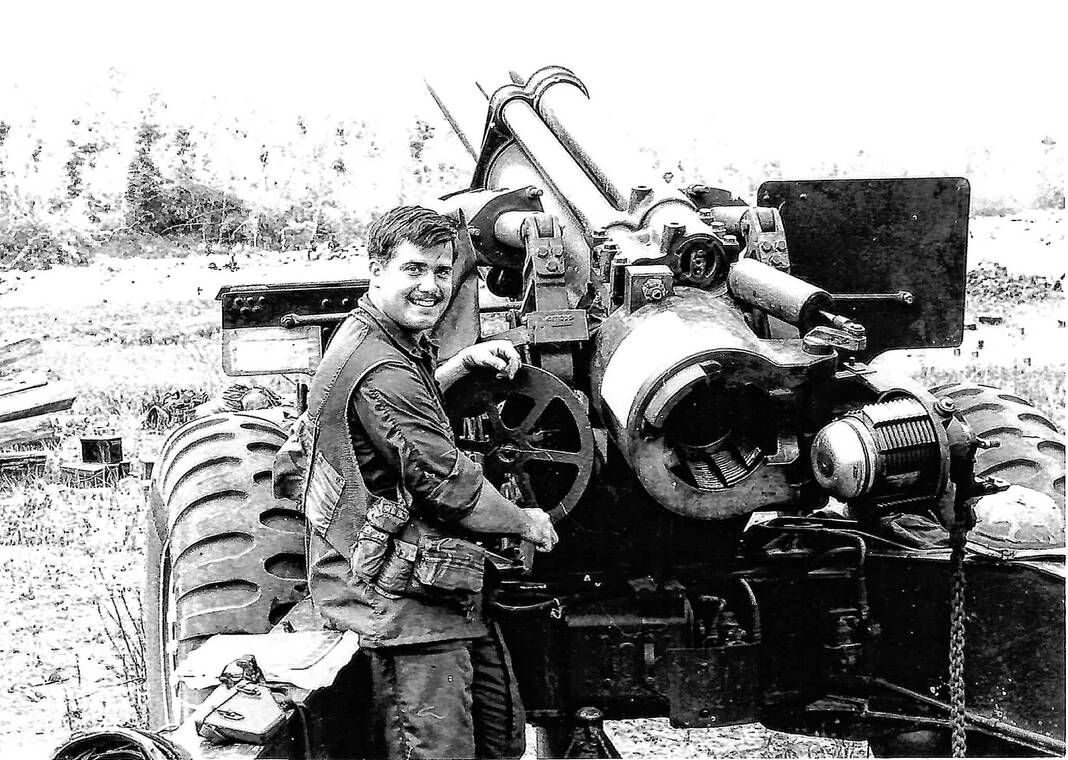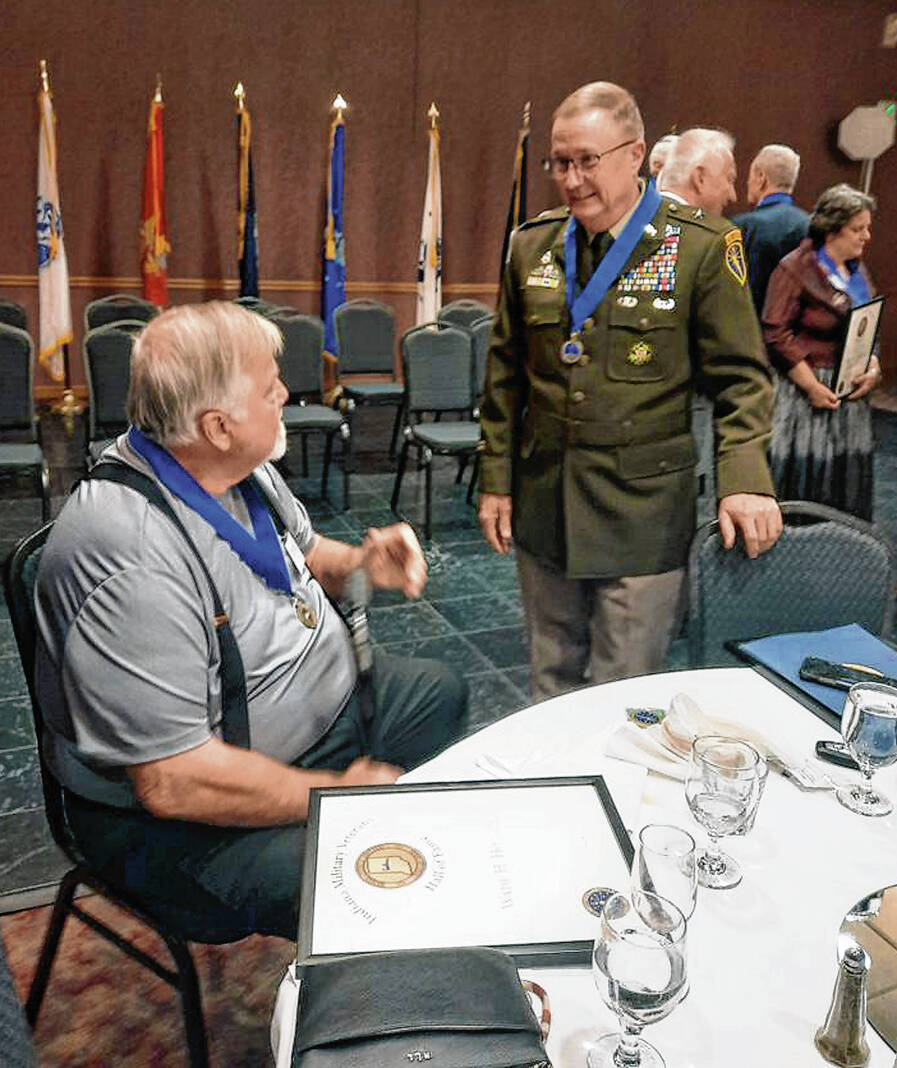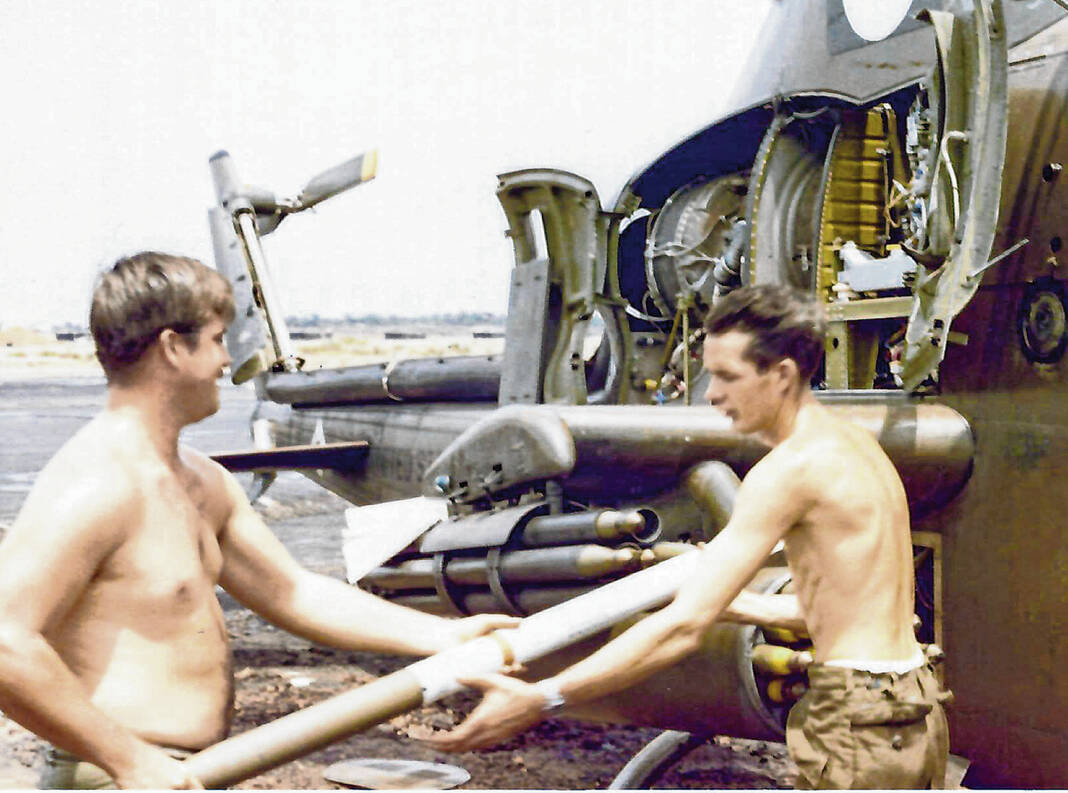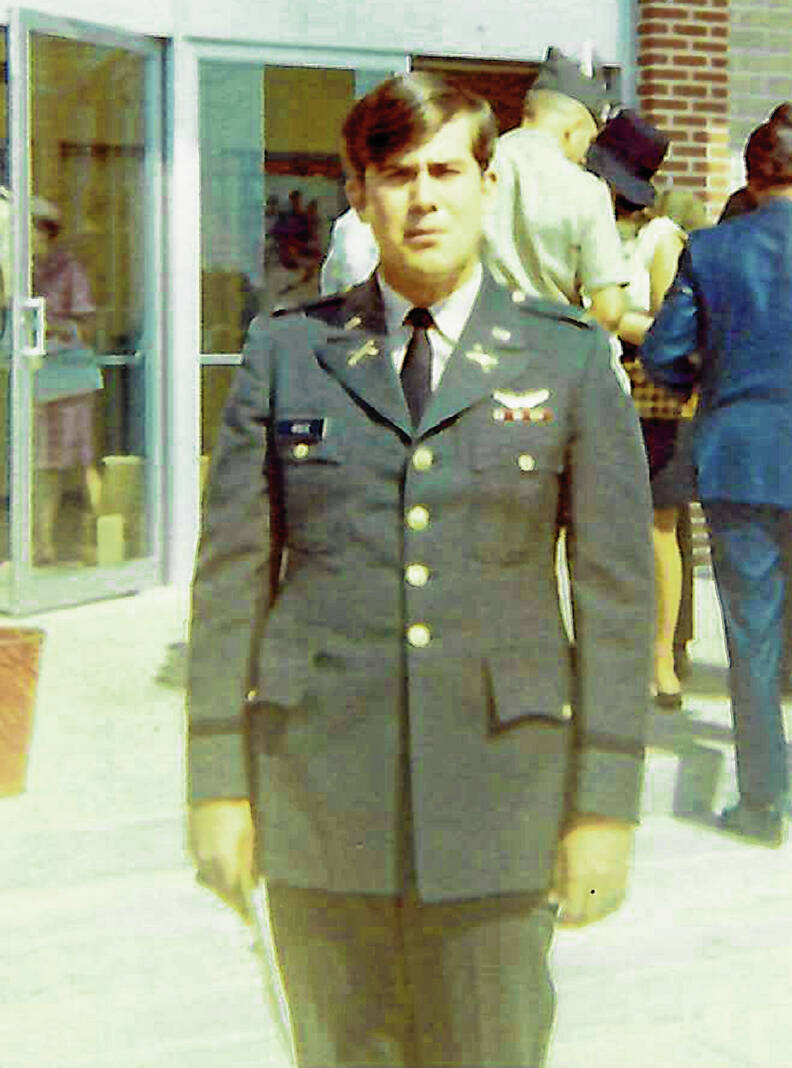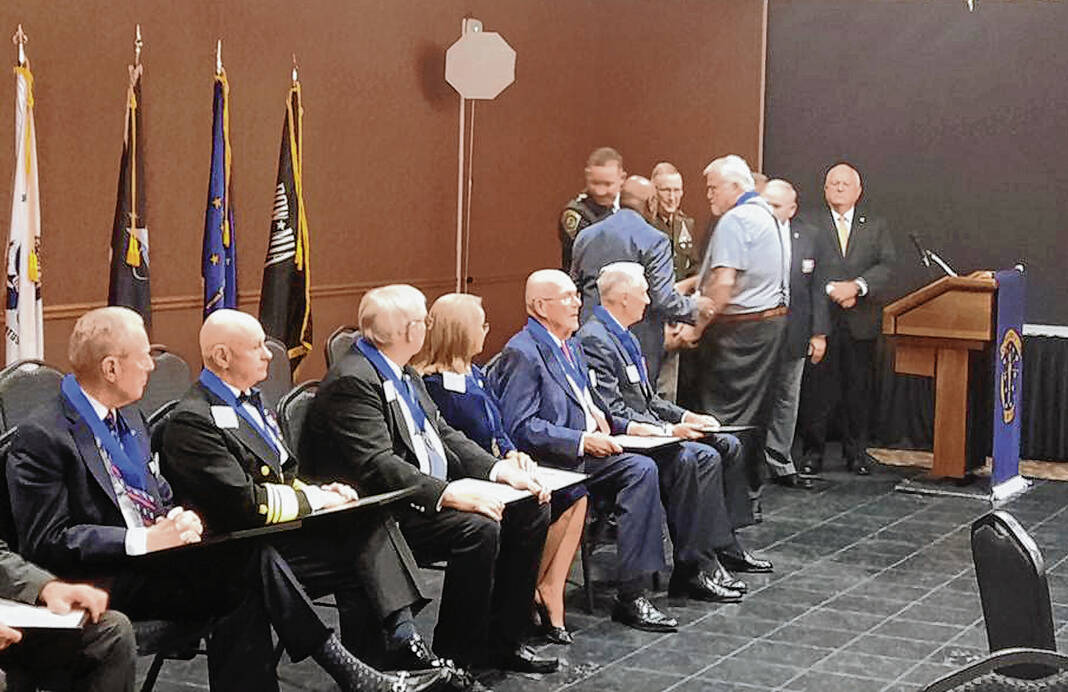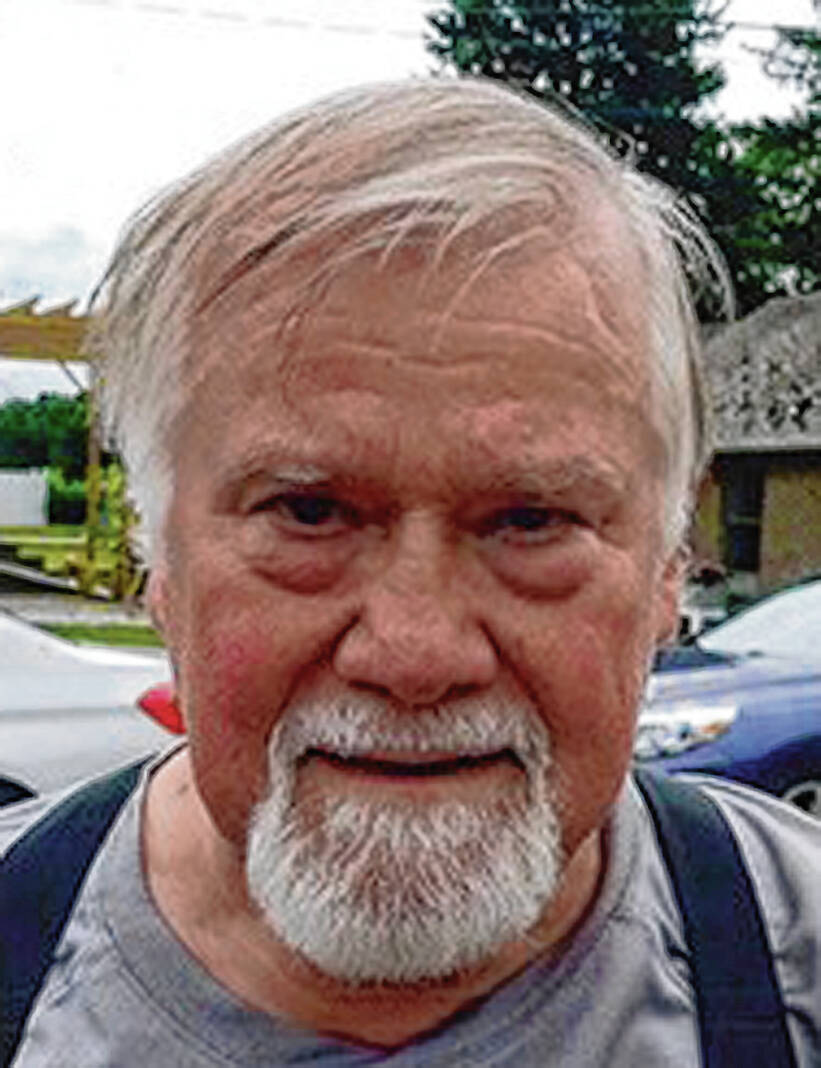For his service with the U.S. Army, Wade Hampton Holt Jr. received several awards and decorations.
That included the Bronze Star, Distinguished Flying Cross, Air Medal (29 awards) and Army Commendation Medal.
In late 2021, the Seymour native added another honor: Indiana Military Veterans Hall of Fame.
The 501(c)(3) organization was founded in 2013 to recognize the honor brought to the state and nation by the sacrifices of Indiana military veterans.
Holt was among 15 Hoosier veterans inducted in the Class of 2021 during a ceremony in Indianapolis.
A lifelong friend, Mike Rogers of Seymour, had reached out to him to see if he was OK with being nominated for the honor. While he’s proud to have served his country, Holt still struggles with what he experienced in Vietnam.
“(Rogers) was a lifelong friend, so I said, ‘If you want to do it, go ahead. I’ll be able to deal with it,’ so he did, and they approved it. They let me in,” said Holt, who now lives in Westfield.
Each inductee could bring a spouse and two guests to the awards dinner. Holt’s wife, Cheryl Holt, and two sons, Wade Holt III and Derrick Michael Holt, attended. One son lives in the area of Dallas, Texas, while the other lives in Colombia, South America.
“They got to be there and see it, too,” Wade said of his family.
Holt attended Lutheran school from first to eighth grade, spent his freshman year at Shields Junior High School and then went on to graduate from Seymour High School in 1966.
As a teenager, he took flying lessons at Freeman Field in Seymour.
“I tried to work in factories, and I wasn’t cut out for that,” he said of after high school. “Honestly, I wanted to fly from the day I can remember. Another guy, Herb Hunsucker, was a neighbor of mine. He and I both jumped out of an airplane out at Freeman Field, and the ride up was all I needed to know that’s what I wanted to do. I never wanted to be a fireman or a cop. I wanted to be a pilot.”
In July 1967, he enlisted in the Army. He went through basic training at Fort Benning in Georgia and artillery advanced individual training. Since there weren’t any openings for officer candidate school at the time, he was sent to Germany for four months.
Then he received orders for artillery OCS at Fort Sill in Oklahoma and remained there until going to flight school in Mineral Wells, Texas.
“At some point in that process, they asked you what you want to do, and I told them and they test you,” Holt said. “I wanted to go be an officer, so I wanted to go to OCS and then go to flight school out of OCS, and evidently, I did well enough on the test they let me try that, and I earned my commission in November of ‘68. I became a second lieutenant.”
The first half of helicopter flight training was in Texas, and the second half was at Fort Rucker in Alabama.
From there, Holt went to Cobra transition at an airfield in Savannah, Georgia, where he became qualified to fly the U.S. Army’s first attack helicopter.
“After, they wanted a year from me in Vietnam,” he said.
To put it mildly, he said that was a life-altering experience. He was 21 at the time.
“When we went out, most of the time, it was because somebody was in trouble, and it was our job to get them out of that trouble,” Holt said. “Unfortunately, something that has stayed with me is the only way to do that was to take human life, and that plays serious tricks on your mind.”
He said he tells people Vietnam was the best and worst year of his life.
“I’ve never been any better than I was as a Cobra gunship pilot in combat, and I don’t ever want to be that good at anything again,” he said. “The thing that weighs on me continuously is the people’s lives I affected. The people I killed were trying to kill me. It’s just that simple. They were doing their thing, and I had to do mine.”
While serving in Vietnam, Holt logged more than 900 combat mission flight hours. He provided air support for special forces engaged in close combat with enemy forces by drawing ground fire toward his aircraft.
These missions in Zone D, C, the Angels and Parrot’s Beak regions near the Vietnam/Cambodia border were extremely intense and were the critical factor in friendly forces winning the day to fight again.
On three separate missions, Holt’s Cobra was so riddled by enemy ground fire that a forced emergency landing was necessary due to the destruction of the hydraulic systems. During one mission, his aircraft was struck by .50-caliber gunfire shattering the canopy with metal shrapnel, striking his face and neck.
“The Cobra at the time was one of the most survivable helicopters around, but if you took one hit in the wrong place, you were coming down,” Holt said. “You could take 50 hits not in that wrong place and it would be fine. (A part that) basically held the engine to the framework of the helicopter, if you ever lost that, you were coming down.”
Holt said the Cobra had two hydraulic systems with a common bleedover valve between them.
“When one started losing power, the other one would bleed over to try and keep both of them alive,” he said. “You basically had 15, 20 minutes where you would have hydraulics, and after that, you had no hydraulics. Every control in the Cobra required hydraulics except the throttle. The throttle was like a motorcycle throttle. It had a handgrip on the end of it, and you rolled it on and off.”
If there was a hydraulic problem, Holt said he had no way of maintaining the heading with the helicopter.
“You have to make a running landing and maintain enough speed that the airflow around the body of the helicopter will keep you halfway pointed straight, and you just keep rolling the throttle off until you land,” he said. “It gets pretty touchy.”
One sentence shared during the Indiana Military Veterans Hall of Fame induction ceremony sums up why Holt was chosen for the honor: “Lt. Holt’s devotion to the mission and unwavering courage in the midst of life-and-death encounters with enemy forces saved innumerable lives and reflect great credit upon himself and the U.S. Army.”
Holt said he and another man who went through artillery OCS, flight school and Cobra transition together ended up in the same unit in Vietnam and both became second lieutenants, and it was very rare to see that rank in a Cobra.
“You usually got Cobra transition on your way back from your second tour,” Holt said. “Basically, they had openings when we graduated, and they just go in and they start with the class average in classroom and flight. I was one of the lucky ones that was high enough up that they offered it to me. The other guy, they offered it to him, and we both went through it.”
Both moved up to first lieutenant in Vietnam, and Holt then was promoted to captain.
After he was discharged from active duty in 1972, Holt joined the Army Reserve and was promoted to major. He was only assigned to one unit — in Hoover, Alabama.
“Basically, all we did was test all of the reserve units east of the Mississippi River,” Holt said. “We would provide them with tactical information of a combat environment and watch what they did with that information. We expected them to do certain things, and they were graded accordingly. It wasn’t a number grade. You passed, you were marginal or you failed. Those were the options. A lot of testing we did was infantry and artillery.”
Once Holt was discharged, he went to the University of Southern Mississippi and earned a degree in computer science in December 1984.
He then did a lot of contract work, which meant moving around a lot. He had jobs in Texas, Massachusetts, Colorado, Georgia and Alabama.
“When I first started, because of my military background, I tended to take military contractor jobs, help them get started on certain military projects,” he said. “Over time, I transferred to database administration. At that point, I did a lot of medical and financial jobs.”
Holt retired in the early 2010s and now is on disability for his military service.

